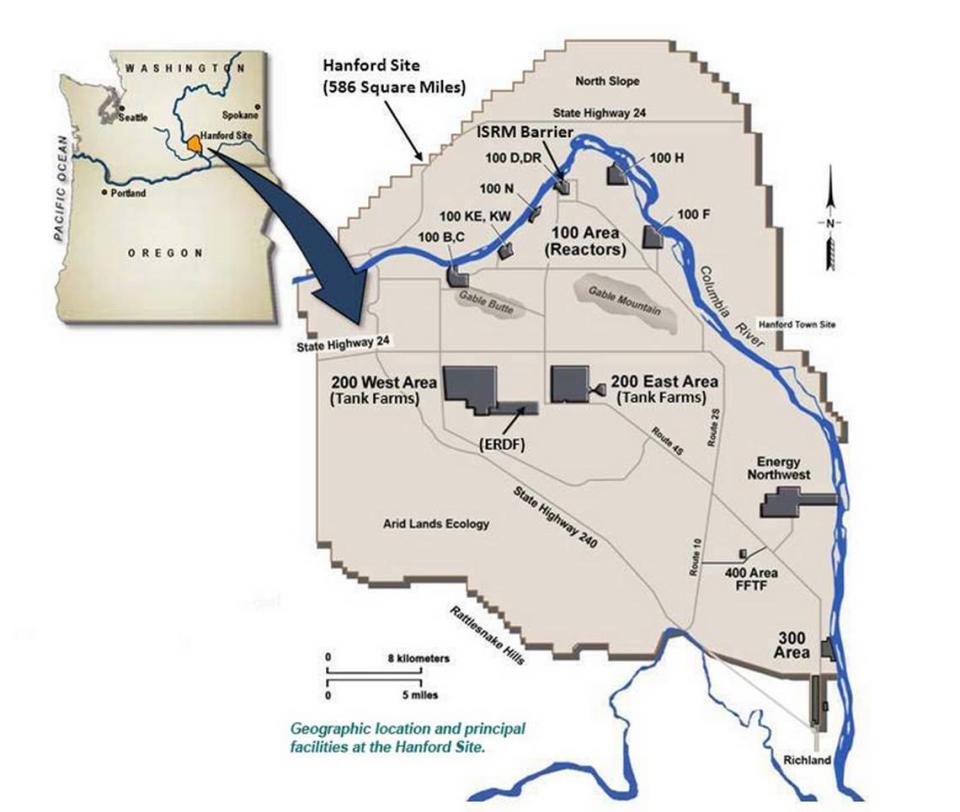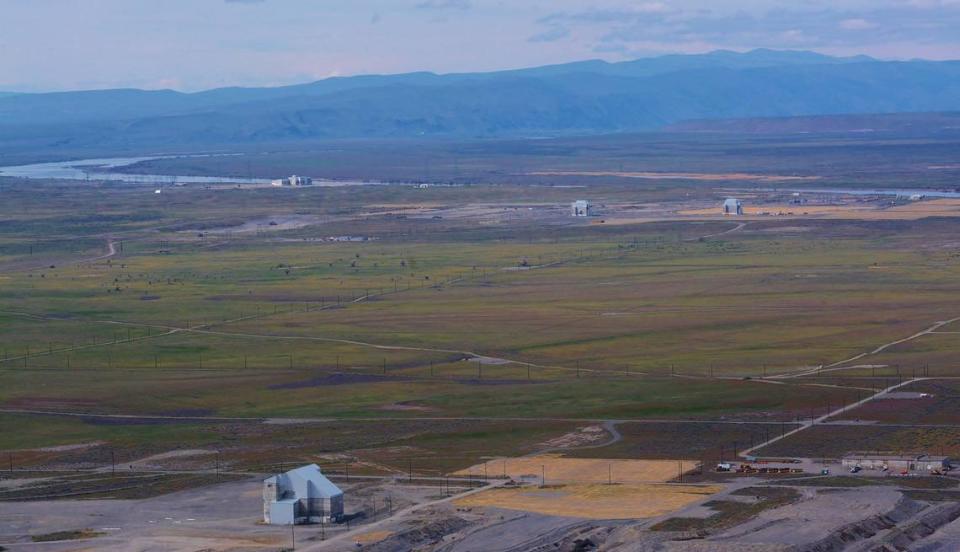WA site once dedicated to powering nuclear weapons may soon generate clean energy
The Department of Energy is proposing leasing some never-used land at the Hanford nuclear reservation site in Eastern Washington for clean energy production.
It has identified 40,000 acres of land potentially available for clean energy projects at Hanford, the Waste Isolation Pilot Plant in New Mexico, the Savannah River Site in South Carolina, the Idaho National Laboratory and the Nevada National Security Site.
Developments could include solar, wind, nuclear energy, hydroelectric, geothermal, clean hydrogen, and fossil resources that meet clean energy requirements through carbon capture and storage, DOE said on Tuesday.
More information on land available is expected to be shared on Friday when DOE holds a meeting in Washington, D.C., open to organizations that have started clean energy projects producing at least 200 megawatts of electricity.
Energy Secretary Jennifer Granholm is expected to speak.
An additional meeting at Hanford and each of the other sites will be held in the fall or winter, according to DOE.

The land to be leased at Hanford would not be on the Hanford Reach National Monument, which is DOE land managed by U.S. Fish and Wildlife. It was created out of the former security zone around the production portion of the nuclear reservation.
It also is expected to be outside the secure entrances to Hanford, which includes the Wye Barricade about 10 miles north of Richland.
Facilities already developed on Hanford land outside the Wye Barricade include the LIGO observatory, the HAMMER training facility and Energy Northwest’s commercial nuclear power plant, the Columbia Generating Station.
The land selected at each DOE site is about 2,000 contiguous acres or larger and is suitable for large scale — 200 megawatts or larger — projects, according to a notice in the Federal Register.
Already solar energy projects are proposed just west of the Hanford nuclear reservation in Benton County and a wind farm with up to 244 turbines is proposed for the Horse Heaven Hills just south of Kennewick.
Energy Northwest also is working with X-energy to operate an advanced small modular reactor by the end of 2030 on Hanford site land it leases north of Richland. The project could be scaled up to produce as much as 960 megawatts of electricity.
Even without those new projects, about 40% of Washington state’s power is produced within a 100-mile radius of the Tri-Cities, according to the Tri-City Development Council.

President Biden has set a goal to achieve clean, carbon-free electricity nationwide by 2030 and a net-zero economy by 2050, not only through effective policy implementation but also through the strategic use of facilities and lands.
“As the federal leader on clean-energy research and development and the steward of more than 2 million acres of land, DOE has both a unique opportunity and clear responsibility to lead and identify creative solutions to achieve the president’s mandate,” according to the Federal Register announcement.
It will continue to work with industry, tribal nations, communities, regulators and others as it moves toward developing clean energy projects on DOE land, it said.
Among goals is creating good jobs, according to the Federal Register.
The 586-square-mile Hanford site was used to produce nearly two-thirds of the plutonium for the nation’s nuclear weapons program from World War II through the Cold War.
Before the land was seized during World War II for the Manhattan Project development of an atomic bomb, it was used by Native Americans and by settlers who had orchards and farms.
Now environmental cleanup of areas of the site contaminated with radioactive and hazardous chemical waste is underway.

